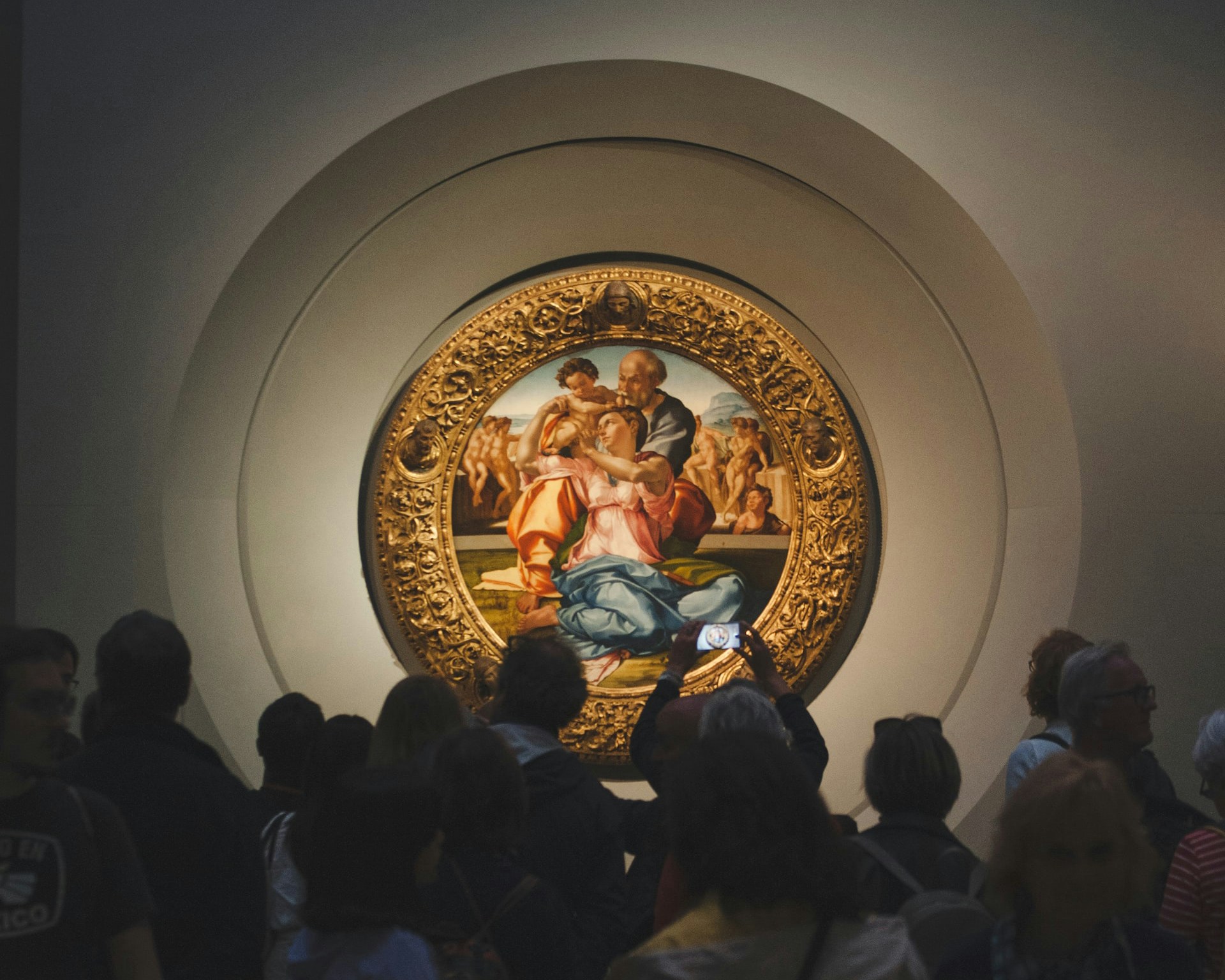Who created the Doni Tondo?
Michelangelo Buonarroti (1475–1564) was an Italian Renaissance master—sculptor, painter, architect, and poet. Best known for David and the Sistine Chapel ceiling, Michelangelo rarely painted on wood panels, making the Doni Tondo a true rarity.
He approached painting as sculpture with color, giving the figures physical weight and monumental presence. Commissioned during his early career in Florence, this work foreshadows the dynamism of his later frescoes. Today, it stands as a testament to his versatility and genius, offering a rare glimpse into how he bridged different artistic mediums.

